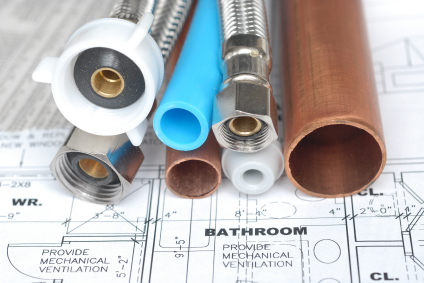Should You Replace Polybutylene Piping In Your Home?

When was your home built?
There are many good reasons to purchase an older home. The neighborhood is more established. Landscaping is lush and full.
And while there are a host of reasons that went into making your final selection, choosing your home because of the piping used in your plumbing system probably wasn’t one of them.
Polybutylene piping was commonly used when installing a plumbing system in homes constructed between 1978 and 1995. Polybutylene resin is a saturated polymer that can be molded into a number of forms and shapes. It won’t crack under pressure, it’s flexible, and in general is resistant to chemicals, acids, alcohols, and fats. It doesn’t corrode, won’t calcify, and transmits low noise. Meaning it was thought to be the perfect solution for replacing traditional water pipes.
And with the housing boom that occurred during this period of time, this low cost alternative was introduced into the marketplace where it remained for a couple of decades.
Polybutylene piping is used as the water main to bring water into the home. You’ll typically find polybutylene piping entering into the water heater, and feeding sinks, toilets, and bathtubs throughout your home. You’ll also find it outside as it enters your home through basement walls, attached to the main water shutoff valve, and attached to the home’s water meter.
While a home inspection can tell you if you have polybutylene piping in place, it can’t tell you the condition. Because deterioration of polybutylene pipes happen from within, the only way to know if you have a problem is to hire a licensed plumber to make the determination. Be aware that many polybutylene piping systems used copper fittings, meaning even if you see copper in your home, it doesn’t mean your entire system is made from copper.
So what’s the problem?
Polybutylene water pipes take about 10 to 15 years to deteriorate. Because they deteriorate from the inside out, it’s difficult to assess the damage. Eventually leaking begins, and if not corrected promptly, can quickly escalate and cause extensive damage. Even if you fix one section of a ploybutylene water pipe, it simply moves to another section of the pipe and starts the process all over again. Once leaks are found, the best course of action is to replace and repipe the entire system. It’s the only way to ensure your plumbing is fixed and won’t give you additional trouble in the future.
Should I buy a house with polybutylene pipe?
When considering buying a house with polybutylene pipes, it’s essential to understand the risks involved. These pipes, popular between 1978 and 1995, are prone to deterioration from the inside, leading to potential leaks and water damage.
The issue often goes undetected until significant damage occurs. Before purchasing such a property, a thorough inspection by a professional is advised to assess the piping’s condition. If polybutylene pipes are present, be prepared for the possibility of future pipe replacement, which can be a considerable expense. It’s crucial to weigh these factors against the home’s overall value and condition.
Was your home constructed with polybutylene piping?





